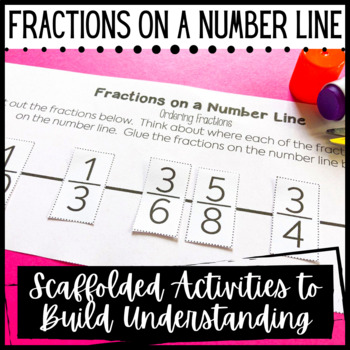Fractions on a Number Line Activities - Fraction Worksheets, Games, Centers
- PDF
What educators are saying
Also included in
- This huge fractions bundle contains 7 of my fraction resources, covering everything from understanding 1/2, to using 1/2 as a benchmark fraction, to fractions on a number line, to equivalent fractions, to comparing and ordering fractions, and more. Save over 30% when you buy the mega bundle!This fraPrice $18.75Original Price $27.75Save $9.00
Description
This mostly no prep resource is scaffolded to help students develop a thorough understanding of fractions on a number line. It includes worksheets, activities, task cards, centers, and more that cover this skill in a variety of ways to help make teaching fractions on a number line easier for you. The activities also include activities to help students use number lines to better understand equivalent fractions and how to compare and order fractions.
The activities start off with the basics for beginners to help you introduce fractions on a number line, and then get increasingly more difficult. This makes differentiating for the needs of your students much easier.
Students start with building a better understanding of how a number line works and practicing with proper fractions with like denominators.
The activities get more difficult, having students practice equivalent fractions, comparing fractions with unlike denominators, and fractions greater than 1 on a number line.
Eventually, students have to practice putting fractions with different denominators in ascending order.
Save over 30% when you buy this as part of my Fractions: Mega Bundle that includes practice comparing fractions, equivalent fractions, and more.
The following is included in this resource:
- 11 fractions on a number line worksheets that start easier and become increasingly more difficult (great for differentiating)
- a whole class Snowball Fight Activity (or do a milder, partner up version of the activity)
- a small group or center activity to practice comparing and ordering fractions on a number line
- 32 fraction task cards with differentiated answer sheets
- a fractions on a number line assessment
- answer keys and a grading rubric
These activities can be used in upper elementary for small groups, assessments/test, center activities, explicit instruction, for special education students, for ELL students, for fraction workstations, and more.
This directly addresses common core standard 3.NF.A.2 for 3rd grade students, and makes a great fractions on a number line review for 4th grade or for struggling 5th grade students.
Check out the preview to see everything that is included in this resource!
You might also be interested in some of my other resources:
Kalena Baker, Teaching Made Practical






